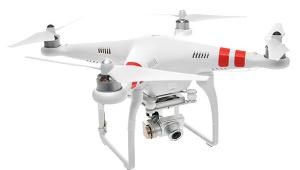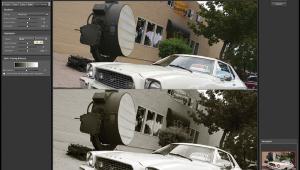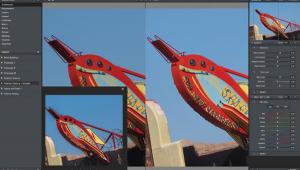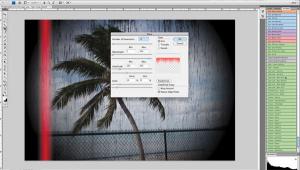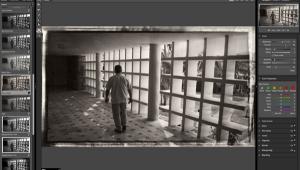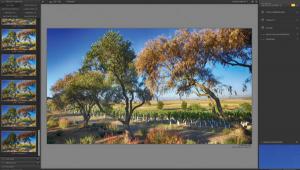Digital Innovations
The Old Operating System Debate
Mac OS Vs. Windows
"Different strokes for different folks."--Sylvester Stewart from "Everyday People" Occasionally I get e-mail from readers who think I'm biased toward Macintosh computers and against Windows computers; the next day I'll get another e-mail claiming that I hate the Mac and only focus on products for Windows users. Let me set the record straight: Counting my wife's laptop, there are five computers here in the Pixel Palace. Mary's laptop is a Compaq Armada running (yikes!) Windows 95, and while my Apple 5300 PowerBook is equally ancient, it lets me write when I'm on the road. In my office atop a V-shaped furniture configuration sits a shiny new silver Apple Power Macintosh G4 running OS 9.2/OS X 10.1 on the right-hand side and a sparkling new eMachines T4155 Windows XP computer powered by a 1.5GHz Intel Pentium 4 chip on the left. The keyboards are set up so that while I'm typing this column on the G4, a slight swivel of my chair to the left lets me work on the T4155. I do most, but not all, of my writing and imaging on the Power Macintosh, and almost of my e-mail and web surfing, including finding and capturing screenshots for Web Profiles, on the Windows XP computer. Many times I work on both computers at the same time, shifting from writing this column, for example, to checking information on the World Wide Web or dashing off an e-mail response to a reader. Am I biased toward Windows or the Mac OS? I don't think so. Recently, I was designing a logo based on one of my photographs and here's how the process went. I scanned a slide using the Epson Expression 1680 flat-bed (with transparency adapter) that's connected to the Power Macintosh. I cleaned up the image using Adobe Photoshop and saved the TIFF file onto an Iomega ZIP disk in the 250MB drive that's built-into the G4. Then I inserted the disk into the external ZIP 250 drive connected to the T4155 and opened the file in Photoshop 6. JASC's insanely cool Virtual Painter plug-in is only available for Windows and I needed their product to produce the specific effect I was trying to achieve. After running the plug-in, I saved the file back onto the ZIP and inserted it into the G4 for final tweaking and adding text. I know that in this millennium using a low-tech "sneaker-net" approach to moving data between two machines is lame and Kevin Elliott from Mac MD Care (www.macdcare.com) wants to build a little Ethernet network for me, which I'm going to do very soon. The truth is that I like and use both kinds of systems, but there are aspects of both kinds of computers that drive me to exasperation. My otherwise flawlessly performing eMachines T4155 Windows XP computer periodically asks me to reinsert the hard disk when shutting down. The company says they're "tracking down an answer" even though my guess is that it's an operating system glitch instead of a hardware problem. My new G4 is plagued by occasional and random system lockups, but Mac MD Care think they've found a cure. If it works, I'll share it with you next month. I find working with Mac OS X less intuitive than OS 9, but that's probably because I've used a Macintosh since 1984 and this new operating system is certainly different. Neither operating system nor computer is perfect, but this is an imperfect world. Photoshop Action News In other Photoshop Action news, the legendary Action Xchange (www.actionxchange.com) has a new name, but the same familiar URL. The new name is Adobe Xchange and it now contains not only Actions, but also extensions and modules for Adobe GoLive as well as Photoshop. While there be sure to download Sketch by Rocio Echvarri which, with one button click, turns a photograph into a drawing. Another interesting one is Ripped Picture by Michael, which rips an image in half, providing both depth and an interesting tear line. All Actions are small, fast downloads no matter what kind of Internet connection you have and they are inherently cross-platform, so an Action made on a Windows computer works equally well on a Macintosh. Software From Moose Some of the highlights of the DigitalPro 1.2 (beta) that I've been testing include the ability to generate thumbnail images and HTML (Hyper-Text Markup Language) gallery pages. Image handling includes Lossless JPEG along with the ability to rotate, flip, and reverse images. There's also a special Digital Light Table and Digital Loupe for quick image review. You'll also find what Moose calls a "True Unsharp Mask filter" for optimal sharpening. The program addresses the business aspects of image management and includes an interface for creating submissions along with a selection of pre-loaded templates. You can save all of your own customized settings for instant recall later on. The initial version of DigitalPro is available for Microsoft Windows, and the beta version works flawlessly on my XP system and Moose tells me that a Mac OS version is in the works. For more information about DigitalPro or to download a fully functional, 30-day version visit www.nikondigital.org. ZIP It Up New Ilford Ink Jet Papers The first thing I do with any new ink jet paper is read the directions; I look at the manufacturer's recommendation for printer driver settings, then make a test print of a typical image using Vivid Details' Test Strip Photoshop compatible plug-in (www.vividdetails.com). Test Strip shows me how much lighter or darker the paper will print than my standard paper and how to correct any color shift. Ilford's recommended driver setting for the Epson Stylus Photo 820 that I'm currently testing is "Photo Quality Gloss Film" with resolutions ranging up from 720dpi. My test print showed that both density and color were perfect and prints made from portrait files had a lushness that complimented the images. Tests using monochrome files showed an almost imperceptible magenta shift, not uncommon when printing black and white images on any color printer and with any ink jet paper. This file could be corrected using any one of the techniques that David Brooks mentions in his story on printing monochrome images in the December 2001 Shutterbug, but I chose to print the files at 2880dpi using black ink only and the results were stunning. Ilford has added a new paper to the line-up called Galerie Classic Gloss. When printing commercial images, I reach for Classic Gloss because it offers a true glossy surface that reminds me of Ilford's own traditional darkroom papers. Prints made on this paper are expected to have a life of 20 years when used with what Ilford calls "high quality inks." Galerie's smooth ink jet papers are compatible with Canon, Epson, Hewlett-Packard, and Lexmark printers as well as pigment-ink printers such as the Epson Stylus Photo 2000P. Galerie is available in letter-size, 11x17", and 13x19" sizes. Additional information is available on their web site at www.ilford.com/galerie. ZIP Compression |
